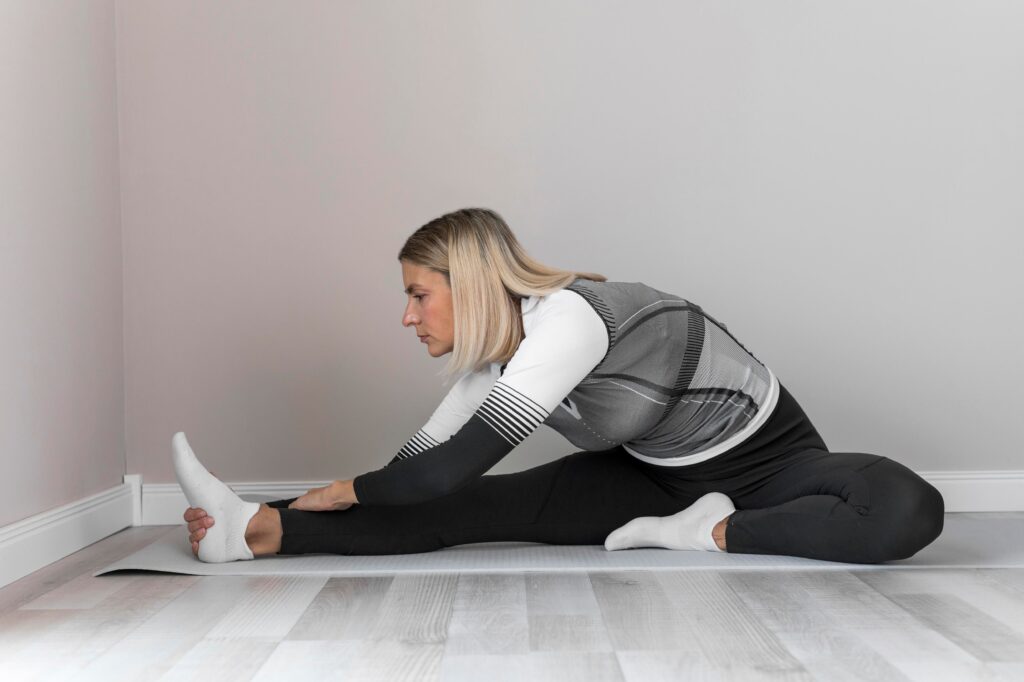Good posture is of the essence when talking about general health and well-being. Unfortunately, many people struggle with slouching and poor posture due to sedentary lifestyles and sitting for long hours. In the article, we will discuss the best exercises to improve your posture, how to correct your sitting posture and the different benefits of good posture. Now, let’s dive in and see how you can enhance your posture and eliminate this slouching.

Understanding Posture
What is Posture?
Posture refers to the position in which one holds his or her body while standing, sitting, and lying down. Having good posture simply means that an individual has trained his or her body to stand, walk, sit, and lie in the positions placing the least amount of strain on the supporting muscles and ligaments.
The Impact of Slouching
Slouching will bring about several health complications, such as back and neck aches, reduced capacity of lungs, and depleted energy. In the long run, poor posture also impacts your confidence and appearance. Therefore, understanding the significance of correct sitting posture can be very critical in avoiding such problems.
Causes of Poor Posture
Sedentary Lifestyle
The major contribution towards bad posture comes from a sedentary lifestyle. Sitting for too long stretches at a time, mainly when there is a lack of support for the back, may lead to forward bending and the development of poor posture.
Weak Muscles
Weak muscles contribute to poor posture, especially in the core and back. However, such muscles can be strengthened by performing appropriate posture exercises.
Poor Ergonomics
Poorly designed furniture or failure to set up your workstation properly can hurt your posture. Care to see that your desk and chair are ergonomically designed is the way to go toward better posture.
Benefits of Good Posture
Improved Breathing and Digestion
Good posture makes it easier for your diaphragm to move up and down. With better breathing comes improved digestion. This would increase your overall energy levels and make you feel better.
Reduced Pain and Discomfort
Good sitting posture exerts fewer pressures on the muscles and ligaments, which, if stretched, would cause back and neck pains. It can relieve one from the discomfort brought forth by sitting for a long time.
Enhanced Appearance and Confidence
Good posture is known to make you look better by standing tall and making you look more confident. Good standing and sitting postures reflect an image that speaks of strength and energy.
Top 10 Exercises to Improve Posture
- Cat-Cow Stretch
The Cat-Cow Stretch is a mild exercise that makes the spine supple and enhances posture.
- Start, get onto your hands and knees in a tabletop position.
- Inhale and arch your back. It is the Cow Pose.
- Exhale, round your spine, and it’s a Cat Pose.
- Do 10-15 repetitions.
2. Squeeze Those Shoulder Blades
The next exercise works the muscles between your shoulder blades, enhancing your posture.
- Sit or stand with your back straight.
- Squeeze your shoulder blades together.
- Hold for 5 seconds, and then let go.
- Repeat for 10-15 reps.
3. Chest Opener Stretch
The Chest Opener Stretch corrects the forward lean caused by too much sitting and computer work. This stretch lengthens the chest muscles.
- Stand with your feet at shoulder distance apart.
- Interlace your fingers behind your back.
- Slowly raise your arms and expand your chest.
- Hold for 15-30 seconds and do 3 repetitions.
4. Plank Exercise
The Plank Exercise strengthens your central core muscles, key supporters of great posture.
- Start in a push-up position with your forearms on the ground.
- Keep your body in a straight line from head to heels.
- Hold for 30-60 seconds.
- Repeat 3 times.
5. Wall Angels
Wall Angels help improve shoulder mobility and posture.
- Stand with your back against a wall.
- Raise your arms to form a “W” shape.
- Slowly raise and lower your arms.
- Repeat for 10-15 repetitions.
6. Seated Row with Resistance Band
This exercise strengthens the muscles that support correct sitting posture.
- Sit on the ground with your legs extended.
- Loop a resistance band around your feet.
- Pull the band towards your torso, squeezing your shoulder blades.
- Repeat for 10-15 repetitions.
7. Hip Flexor Stretch
Stretching the hip flexors can improve lower back and hip alignment.
- Kneel on one knee with the other foot in front.
- Push your hips forward, stretching the front of your hip.
- Hold for 15-30 seconds and repeat on the other side.
- Repeat 3 times on each side.
8. Thoracic Extension
This exercise improves mobility in the upper back and also improves one’s posture.
- Sit forward on a chair with your back straight.
- Place your hands behind your head.
- Lean back, opening up your chest over the back of the chair.
- Hold 15-30 seconds and repeat three times.
9. Bridge Exercise
The Bridge Exercise strengthens your lower back and glutes.
- Lie on your back with your knees bent and feet flat on the floor.
- Lift hips towards the ceiling.
- Hold for 5 seconds and lower.
- Do 10-15 repetitions.
10. Bird Dog Exercise
This exercise will improve your core stability and posture.
- Get down to your hands and knees into a tabletop position.
- Stretch one arm with the opposite leg.
- Then, hold for 5 seconds; then, switch sides.
- Do 10-15 repetitions on each side.
Tips for Maintaining Correct Sitting Posture
Ergonomic Setup
Ensure that your desk and chair are set up correctly for good posture. Your feet should be flat on the floor with your screen at eye level.
Regular Breaks
Take regular breaks to get up stretch and move about. This will help counteract the negative effects of long periods of sitting time.
Mindfulness and Awareness
Throughout the day, try to be mindful of your posture. At intervals, make conscious efforts to sit and stand up straight.
Use Ergonomic Accessories
Try ergonomic accessories like adjustable chairs, lumbar supports, and footrests to help adopt good posture while sitting.
Common Posture Mistakes to Avoid
Slouching in Chairs
Never slouch over chairs. Always use the backrest and keep your feet on the floor.
Forward Head Posture
Keep your head aligned with your spine, not tilted forward toward your screen.
Crossing Legs While Sitting
Crossing your legs when seated puts pressure on the hips and back. Both feet must be on the floor.
Leaning on One Side
When sitting or standing, distribute your weight to avoid leaning too much towards one side.
Additional Tips for Improving Posture
Incorporate Posture Exercises
It is always imperative to find time for exercises that can be done to improve posture. The secret to enjoying these benefits is to do exercises regularly.
Use Posture-Correcting Devices
Always use devices or wearables that help in maintaining good posture throughout the day.
Stay Active
Regular physical activity helps strengthen your muscles and maintain good posture. Try to exercise at least 30 minutes most days of the week.
Practice Mindfulness
This can help in improving your posture. Again, the answer is very simple: these practices relax the body and increase its awareness, such as yoga and meditation.
The best exercises to enhance one’s posture include Cat-Cow Stretch, Shoulder Blade Squeeze, Chest Opener Stretch, Plank Exercise, and Wall Angels.
FAQs
What are the best exercises to improve posture?
- The best exercises to improve posture include the Cat-Cow Stretch, the Shoulder Blade Squeeze, the Chest Opener Stretch, the Plank Exercise, and Wall Angels will help you achieve the best posture.
How can I stop slouching at my desk?
- To stop slouching at your desk, set up your workstation ergonomically; include regular work breaks with stretches, and focus on the posture exercises.
How do I sit correctly?
- The correct sitting posture is to sit up straight with your back against the chair, feet on the floor, and relaxed shoulders. Your screen should be at eye level.
How often should I do posture exercises?
- You should do these exercises in posture at least 3-4 times a week for optimum results.
Can poor posture cause health problems?
- Yes, poor posture can cause a good deal of health problems—from backache and neck pains to respiratory and digestive problems.
Conclusion
Slouching is bad for your health. Do these posture exercises ingrain them into your daily actions, where you work those muscles responsible for good posture? You just need to be consistent and work at your sitting postures throughout the day. You will be utterly surprised at how much improvement your posture will undergo, which improves your overall health in the process.
By the end of this ultimate guide, you will know everything to achieve better posture, prevent slouching, and acquire proper sitting posture with the right posture exercises.











